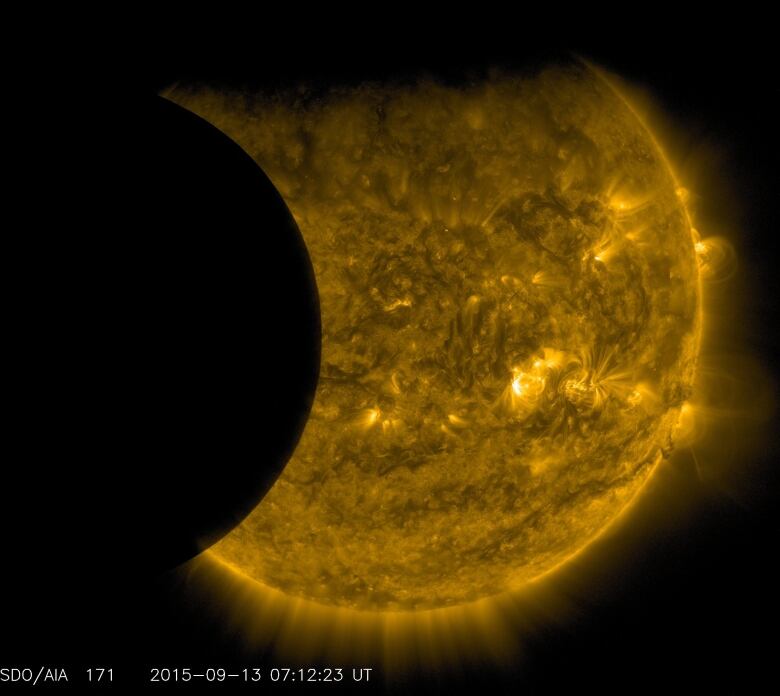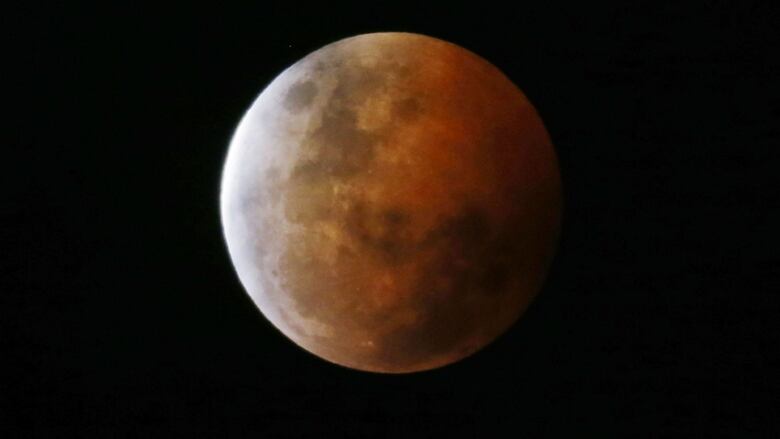Blood moon eclipse - lunacy and literacy come together Sunday: Bob McDonald
There is nothing superstitious about the blood moon eclipse

Everyone in Canada with clear skies on Sunday evening will be treated to a full lunar eclipse, also known as a "Blood Moon"or "Super Moon" event. It also comes at the end of Science Literacy Week, which promotes science education for everyone across Canada.So this is a great opportunity to separate fact from fiction, when it comes to the moon.
Celestial events have a long history of generating fear. The surprise appearance of comets, the sun disappearing in the middle of the day during a solar eclipse, and the brilliant full moon turning blood red in the night sky have all provided fodder for predictions of calamity and the end of the world. (When will people who predict the end of the world realize they have had a 100 per centfailure rate?)
You would think that with the development of modern scientific understanding of what's really going on in the sky, the myths surrounding a lunar eclipse would disappear. But they haven't.
Stories abound about how this super-moon will be enormous in the sky, that it could trigger earthquakes, that the blood red colour is a sign of doom, and the fact that this one is the fourthin a series called a Tetrad must mean some kind of apocalyptic ending.
So, let's swap superstition with a little celestial mechanics.
Super moon
First, the super moon idea.

That sounds like a lot, but that's 14 per centof something that is small to the human eye. The next time you see the moon, stretch out your arm and measure it with your fingers. You will find that the moon is the size of an aspirin. So, 14 per centbigger than an aspirin is, well, just a slightly fat aspirin.
Not very super, but it will seem a little larger, especially when it is low on the horizon.
And there is no correlation between supermoons and earthquakes, although tides will be higher this weekend.
Eclipse
The bonus this time is that we get an eclipse on top of that super moon, which is rare. The last one was 1982, the next one 2033.

That's it.
The event is no more magical that you walking into the shadow of a building on a sunny day.
The difference is that during an eclipseboth the shadow and the object going into it are very large, slow moving, and it's all taking place over our headswhere we don't usually see shadows. The shadow of the Earth is usually invisible because it is cast against the blackness of the night sky. But it's always there, a cone of darkness that extends out 1.4 million kilometresinto space, from the side of the Earth exactly opposite the sun.
The moon provides an opportunity to see that shadow, especially during the early phases of the eclipse, when you can see with the naked eye that the shadow crossing the face of the moon is curved, because of the curve of the Earth. (Take that, flat Earth Society). If you imagine extending that curve into a complete circle, you get a sense of how big our shadow really is in the night sky.
Blood moon
Then there is the blood part.

The effect would be much more interesting seen from the surface of moon itself.If you were standing on the moon just before the eclipse, it would be broad daylight, with the sun shining brightly in the black sky.(The moon has no air, so the sky doesn't turn blue during the day).
From your lunar perspective, you would see a solar eclipse as Earth passes in front of the sun. Once the sun is completely covered during totality, the Earth's atmosphere, backlit by the sun, creates a glowing red ring of fire, a truly spectacular sight. At the same time, the ground all around you would turn the colour of blood.
That sight has never been seen by human eyes. Perhapsone of the robots currently orbiting the moon will get a picture of that glowing ring on Sunday.
Watching it happen
The beauty of a lunar eclipse is that you don't need any equipment to see it. No filters for the eyes are necessary, you don't even need a telescope. Just find a nice piece of ground, some lawn chairs, a few friends and you can make an outdoor party out of it.
Understanding the celestial mechanics of an eclipse helps to appreciate the motions of our planet and the worlds that spin around it, just as science literacy, in general, is a valuable tool for everyone, as our society faces hard decisions about our future.
But while you're appreciating the eclipse from a scientific point of view, don't forget to just lieback and enjoy the magical wonders of this beautiful universe.
And hope for clear skies!












_(720p).jpg)


 OFFICIAL HD MUSIC VIDEO.jpg)
.jpg)



























































































